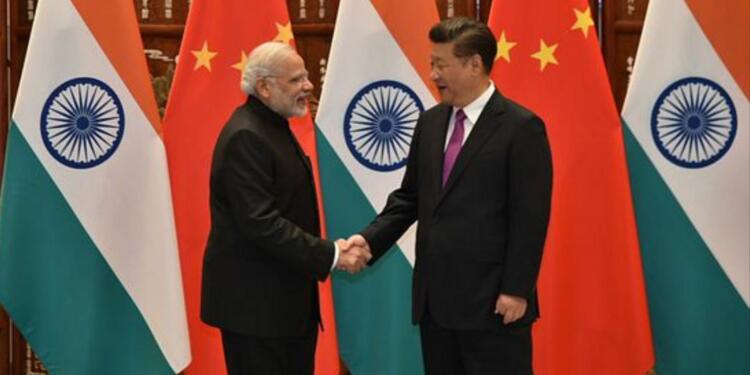India and China, two of the world’s most populous nations, have been engaged in a prolonged border standoff, particularly along the Line of Actual Control (LAC) in the Western Sector. Amidst this backdrop, the recent 29th meeting of the Working Mechanism for Consultation and Coordination Affairs (WMCC) marks a significant development as both nations exchange views on achieving complete disengagement and resolving lingering issues along the border.
The Border Dispute
The India-China border dispute traces its roots back to the early 20th century, with historical grievances and territorial claims dating even further. The primary source of contention lies in the undefined and un-demarcated Line of Actual Control (LAC), a de facto boundary separating the two nations.
The border between India and China is one of the longest unresolved international boundaries globally, spanning over 3,488 kilometers across mountainous terrain, including the Himalayas. Historical disagreements over the ownership of territories such as Aksai Chin in the Western Sector and Arunachal Pradesh in the Eastern Sector have fueled tensions.
Recent years have witnessed a significant escalation in tensions, particularly in the Western Sector. Incidents of transgressions, standoffs, and military confrontations have become more frequent, raising concerns over stability in the region. The Doklam standoff in 2017, involving a territorial dispute between China and Bhutan, highlighted the volatility of the situation and the potential for broader conflicts.
The Importance of the WMCC
The Working Mechanism for Consultation and Coordination Affairs (WMCC) serves as a crucial platform for dialogue and conflict resolution between India and China, specifically focusing on border-related issues.
The WMCC was established in 2012 as part of broader efforts to manage and mitigate border tensions between India and China. Comprising representatives from both nations, the WMCC functions as a diplomatic mechanism aimed at fostering communication, consultation, and coordination on border affairs.
The WMCC plays a pivotal role in facilitating diplomatic engagements and negotiations between India and China, providing a structured framework for addressing border disputes. It serves as a platform for exchanging views, discussing concerns, and exploring potential solutions to enhance mutual understanding and trust.
Through regular meetings and consultations, the WMCC strives to address specific border-related issues, including delineation of the LAC, troop deployments, infrastructure development, and confidence-building measures.
While the WMCC may not have the authority to enact binding agreements, its recommendations and discussions often inform broader diplomatic initiatives and negotiations between the two nations.
Also Read: India-China Border Dispute and the Path to Resolution: Pursuing Peace?
Key Highlights of the 29th WMCC Meeting
The 29th meeting of the Working Mechanism for Consultation and Coordination Affairs (WMCC) was held on March 27, 2024, in Beijing, China. The Indian delegation was led by the Joint Secretary (East Asia) from the Ministry of External Affairs (MEA). The delegation from China was led by the Director General of the Boundary and Oceanic Department of the Chinese Ministry of Foreign Affairs.
Focus of Discussions
The primary focus of discussions during the 29th WMCC meeting was on achieving complete disengagement and resolving remaining issues along the Line of Actual Control (LAC), particularly in the Western Sector of the India-China border areas. Both sides engaged in an in-depth exchange of views on strategies and measures to facilitate disengagement and address lingering tensions.
Agreement on Maintaining Open Channels
Both India and China reached an agreement to maintain open diplomatic and military channels to preserve peace and tranquility in border regions. Recognizing the importance of communication and coordination, both nations committed to regular contact through diplomatic and military channels.
Also Read: Agni-V: India’s Firestarter or China’s Sleepless Nights?
Progress Towards Disengagement
The 29th WMCC meeting builds upon the discussions and engagements of previous sessions, reflecting a continued commitment to dialogue and conflict resolution. While previous meetings may have outlined initial steps towards disengagement, the 29th meeting signifies a concerted effort to advance towards comprehensive resolution.
Acknowledgment of Constructive Dialogue
Both India and China acknowledged the constructive nature of the dialogue during the 29th WMCC meeting, underscoring the importance of mutual recognition and cooperation in addressing border tensions. The meeting demonstrated a shared commitment to upholding peace and stability along the India-China border, despite existing challenges.
Review of Proposals in Eastern Ladakh
The meeting involved a thorough review of proposals aimed at resolving remaining issues in Eastern Ladakh, an area that has been a focal point of tensions and confrontations. By evaluating and discussing specific proposals, both nations aimed to identify practical measures for de-escalation and eventual disengagement in the region.
Also Read: Jaishankar’s Sharp Wit: China’s Intentions Under Scrutiny
Challenges and Road Ahead
Achieving complete disengagement between India and China faces numerous complexities, including differing interpretations of the Line of Actual Control (LAC) and entrenched military positions. It is imperative to maintain momentum in diplomatic and military channels to sustain progress made in negotiations and prevent further escalation. Both nations must adhere strictly to existing bilateral agreements and protocols to build trust and ensure compliance.
International Implications
The India-China border standoff poses significant implications for regional stability, with the potential to disrupt geopolitical dynamics in Asia. A peaceful resolution is crucial not only for the well-being of both nations but also for global stability. Tensions between these two major powers could reverberate across international relations, affecting trade, security alliances, and regional cooperation efforts. Therefore, diplomatic efforts to de-escalate tensions and resolve the dispute peacefully hold considerable importance in the broader context of global geopolitics.
The 29th WMCC meeting stands as a pivotal moment in the ongoing efforts to address the India-China border dispute, showcasing both nations’ commitment to dialogue and resolution. There is optimism for progress towards disengagement and eventual resolution of tensions along the Line of Actual Control. However, sustained dialogue and adherence to peace-building measures are imperative for lasting stability. The meeting underscores the importance of diplomatic engagement and cooperative efforts in navigating the complexities of the border dispute, fostering hope for a peaceful and mutually beneficial outcome in the future.
Also Read: India’s Electronics Surge Sends Shockwaves to China





























